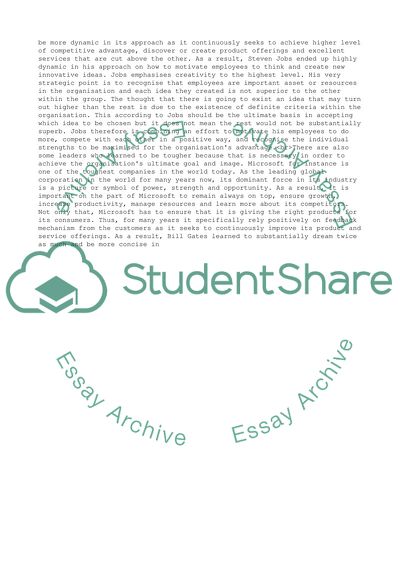Cite this document
(Contrasting Two Leadership Styles Coursework Example | Topics and Well Written Essays - 3500 words, n.d.)
Contrasting Two Leadership Styles Coursework Example | Topics and Well Written Essays - 3500 words. https://studentshare.org/management/1766989-contrast-at-least-two-leadership-styles-of-leaders-of-your-choice-by-studying-and-critically-analysing-leadership-theories-in-organisations-critically-assess-relevance-to-the-current-economic-climate
Contrasting Two Leadership Styles Coursework Example | Topics and Well Written Essays - 3500 words. https://studentshare.org/management/1766989-contrast-at-least-two-leadership-styles-of-leaders-of-your-choice-by-studying-and-critically-analysing-leadership-theories-in-organisations-critically-assess-relevance-to-the-current-economic-climate
(Contrasting Two Leadership Styles Coursework Example | Topics and Well Written Essays - 3500 Words)
Contrasting Two Leadership Styles Coursework Example | Topics and Well Written Essays - 3500 Words. https://studentshare.org/management/1766989-contrast-at-least-two-leadership-styles-of-leaders-of-your-choice-by-studying-and-critically-analysing-leadership-theories-in-organisations-critically-assess-relevance-to-the-current-economic-climate.
Contrasting Two Leadership Styles Coursework Example | Topics and Well Written Essays - 3500 Words. https://studentshare.org/management/1766989-contrast-at-least-two-leadership-styles-of-leaders-of-your-choice-by-studying-and-critically-analysing-leadership-theories-in-organisations-critically-assess-relevance-to-the-current-economic-climate.
“Contrasting Two Leadership Styles Coursework Example | Topics and Well Written Essays - 3500 Words”. https://studentshare.org/management/1766989-contrast-at-least-two-leadership-styles-of-leaders-of-your-choice-by-studying-and-critically-analysing-leadership-theories-in-organisations-critically-assess-relevance-to-the-current-economic-climate.


